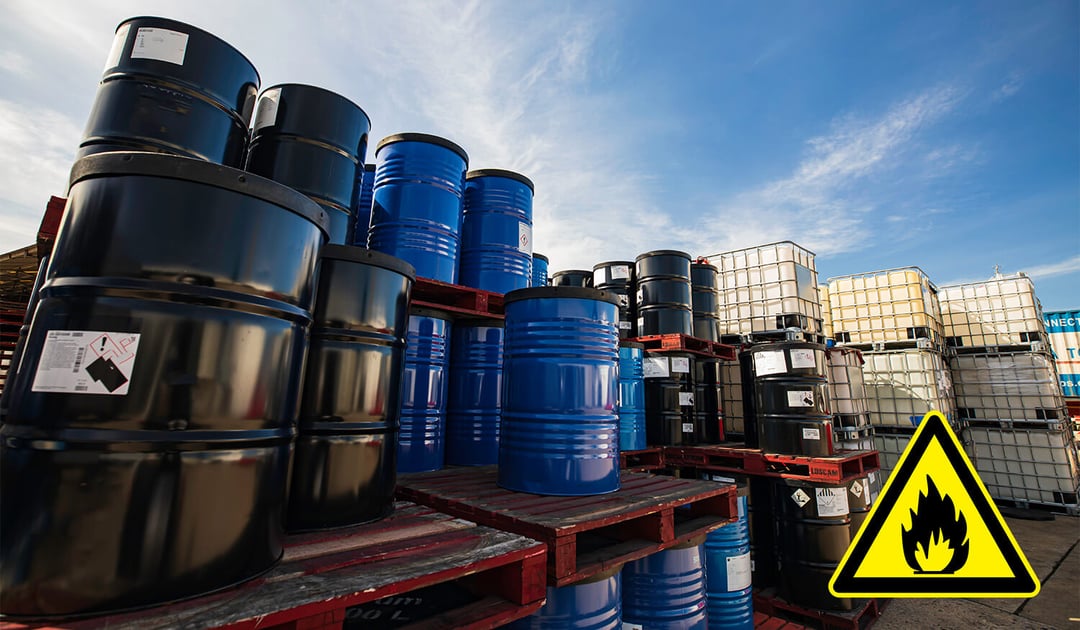
Hazmat shipping, short for hazardous materials shipping, can be a daunting proposition. After all, this sensitive cargo does have the word "hazardous" in its name. But just as with more traditional types of loads, hazmat freight shippers do have options. There are just a few more steps to follow to ensure the movement of this specialized cargo goes smoothly.
What Are Hazardous Materials?
Hazardous materials by definition include those materials that pose an unreasonable threat to the public and the environment. The U.S. Department of Transportation (DOT) breaks them down into classes:
- Class 1 Explosives
- Class 2 Gases
- Class 3 Flammable Liquid
- Class 4 Flammable Solids
- Class 5 Oxidizing Substances; Organic Peroxides
- Class 6 Poisonous (Toxic) and Infectious Substances
- Class 7 Radioactive Material
- Class 8 Corrosives
- Class 9 Miscellaneous Hazardous Goods (to include wastes and pollutants)
Beyond the classes, there are also ORM-D materials, including consumer commodities which present limited hazards because of their form, quantity and packaging for retail sale.
Requirements for Shipping Hazardous Materials
Shipping hazardous materials comes with some non-negotiable requirements. The practice requires specialized carriers who have proper certifications to safely transport them. Those specializations and certifications ensure that the hazmat goods are transported in compliance with federal regulations.
At a very general level, the DOT rule states that "no person may offer or accept a hazardous material for transportation in commerce" unless the person is properly registered, and the "hazardous material is properly classed, described, packaged, marked, labeled and in condition for shipment as required or authorized."
Both shippers and carriers - and the individuals involved in the transportation process (be they transporting via road, rail and/or container) - must maintain annual registration, with few exceptions. Motor carriers particularly must also possess a Hazardous Materials Safety Permit (HSMP) to transport certain materials. And shipments must be accompanied by a Safety Data Sheet (SDS) - Material Safety Data Sheets (MSDS) prior to 2012.
Hazardous Materials Shipper Responsibilities
According to the Federal Motor Carrier Safety Administration (FMCSA), hazardous materials shippers are responsible for determining whether a material meets the definition of hazmat, and if so:
- Proper shipping name
- Class/division
- ID number
- Hazard warning label
- Packaging
- Marking
- Employee training
- Shipping papers
- Emergency response information and phone number
- Certification
- Compatibility
- Blocking and bracing
- Placarding
- Security plan
- Incident reporting
Hazardous Materials Carrier Responsibilities
Hazardous materials carriers have their own responsibilities, according to the FMCSA:
- Shipping paper
- Placard & mark vehicle
- Loading & unloading
- Compatibility
- Blocking and bracing
- Incident reporting
- Security plan
- Employee training
Both parties (the shipper and carrier) are responsible for incident reporting, as you may expect, "at the earliest practical moment."
HazMat Transportation Costs
In addition to the normal freight rate for a given lane, hazmat transportation will likely cost a shipper roughly 25% more for a variety of safety and regulatory related reasons. That added cost includes unique fees, making up their own category of what are known as accessorials. Typically, hazmat shipments have a flat fee of between $100 to $250. This is due to the aforementioned requirements for both driver and equipment that increase the carrier's cost. In fact, hazmat certified truck drivers tend to earn about $15,000 more per year than other drivers.
Insurance costs for the carrier are also passed down to the shipper, while shippers themselves must be insured as well. Fees and other costs vary based on the type of hazardous cargo, and what steps a carrier must take to transport it. For instance, drivers may need to stop at more weigh stations than for a non-hazardous load. Procedurally, they're also likely to take longer to secure and routinely check cargo, with additional care required. And of course packaging and the type of equipment factor into costs, too.
How to Ship Hazardous Materials
Hazardous materials may have their own special transportation requirements, but they are generally not limited to a particular freight mode. Truck and intermodal are both available options in most cases for domestic movement, while both ocean and air cargo (with some exceptions) can be used internationally. Staying in North America, both CSX and Union Pacific offer guidance for hazmat shippers looking to use the rails.
Whatever your hazardous materials freight, and however you're looking to move it, we can help. Just fill out our request a quote form, and we'll get back to you to discuss the best solutions for your hazmat cargo. For more information about InTek, or logistics and supply chain issues in general, check out our Freight Guides.
Get Updates
Featured Articles
Categories
- Freight & Shipping Costs (52)
- Freight Broker (58)
- Freight Forwarder (2)
- Intermodal Transportation (180)
- International & Cross Border Logistics (43)
- Logistics & Supply Chain (413)
- Logistics Service Provider (76)
- LTL (39)
- Managed TMS (49)
- News (38)
- Supply Chain Sustainability (12)
- Transportation Management System (37)
- Truckload (120)
- Warehousing & Distribution (49)



